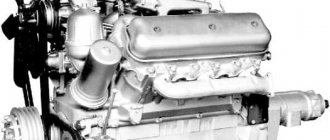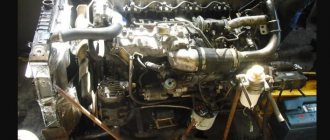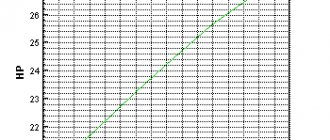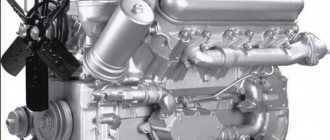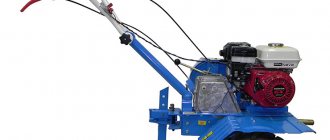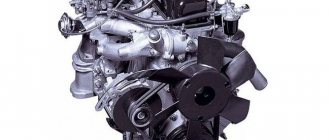Founded in 1958, Zavolzhsky Motor Plant specializes in the manufacture of gasoline and diesel automobile engines. Among the wide range of manufactured products, the ZMZ-523 engine is very popular in the domestic mechanical engineering industry. Technical characteristics, advantages and disadvantages of the motor of this series, as well as its description are presented in this article.
Acquaintance
ZMZ motors are special power units that are equipped with trucks and cars. The demand for these products from the founding of the enterprise to this day is quite high.
Motors are purchased by: the Gorky Automobile Plant (GAZ), the Aggregate Plant in Ulyanovsk (UAZ) and the Pavlovsk Bus Plant (PAZ). ZMZ automotive products are very reliable and easy to operate, which explains their high popularity in the domestic engineering industry. Unlike diesel engines, gasoline models turned out to be more in demand. They are represented by a fairly diverse range of models. One of these units is the ZMZ-523 gasoline engine.
Zavolzhsky Motor Plant
| PJSC "Zavolzhsky Motor Plant" | |
| Type | Public company |
| Exchange listing | MCX: ZMZN [1] , MCX: ZMZNP [1] |
| Base | 1958 |
| Location | Russia: Zavolzhye, Nizhny Novgorod region |
| Industry | Mechanical engineering |
| Products | Internal combustion engines |
| Parent company | Sollers |
| Website | www.zmz.ru |
Zavolzhsky Motor Plant
(
ZMZ
) is a Russian plant for the production of automobile gasoline and diesel engines in the city of Zavolzhye, Nizhny Novgorod region.
Content
- 1. History
- 2 Activities
- 3 Produced engines
- 4 Experimental developments
- 5 Notes
History [edit | edit code]
In March 1956, according to a resolution of the Council of Ministers of the USSR, in the village of Zavolzhye, Gorky Region, construction began on a plant for the production of spare parts and aluminum castings for the GAZ automobile plant. On April 17, 1958, another decree of the Council of Ministers of the USSR was issued on the conversion of the plant into a motor plant, which was to produce automobile engines for Gorky and a number of other automobile plants. For this purpose, GAZ, which had now become the Zavolzhsky Motor Plant (ZMZ), transferred documentation for the production of a number of engines. [2]
On November 4, 1959, the first ZMZ-21A engine was solemnly produced for the GAZ-21 Volga passenger car; production of this engine continued until 1976. In 1960, the Chief Design Department (OGD) was created to create new engines. From the beginning of the 1960s, the production of engines began for the Gorky, Yerevan and Ulyanovsk automobile plants, as well as the Pavlovsk, Kurgan and Riga bus plants. In addition, production of ZMZ-53 and ZMZ-66 engines for GAZ-53A and GAZ-66 trucks began. In the mid-1960s, the creation of a new passenger engine, the ZMZ-24, began for the GAZ-24 Volga. Already in December 1968, the plant reported the 1,000,000th ZMZ 4-cylinder engine produced, and in 1975 the 1,000,000th 8-cylinder engine. Also in 1969, the plant transferred technical documentation of engines for the Ulyanovsk Automobile Plant (UAZ) to the Ulyanovsk Motor Plant.
In the 1980s, the plant created a new 4-cylinder engine ZMZ-406. Based on this engine, a whole model range was created for GAZ and UAZ cars. Also in the 1990s, engines for GAZelle, UAZ-3160 and a number of others were developed.
In November 2005, the ZMZ-5143 diesel engine was put into production for the first time.
April 17, 2022 - 60 years since the formation of the Zavolzhsky Motor Plant.
Over 60 years, about 14.8 million engines were produced.
The head of the Nizhny Novgorod region, Gleb Nikitin, took part in a gala meeting dedicated to the 60th anniversary of ZMZ, with the presentation of awards to the best employees, and got acquainted with the existing production. He also discussed with the General Director of SOLLERS PJSC and UAZ LLC Vadim Shvetsov the prospects for the development of the ZMZ industrial site [3].
Activities [edit | edit code]
On April 28, 2004, the 13,000,000th engine rolled off the ZMZ assembly line, it became ZMZ-40522.
In 2007, the plant produced 251,741 engines, which were sold to the Gorky Automobile, Ulyanovsk Automobile and Pavlovsk Bus Plants.
Since January 2008, the plant began industrial production of Euro-3 engines.
In 2011, the first 4-cylinder gasoline and diesel engines were assembled that meet the requirements of the Euro-4 environmental standard.
Since the mid-2010s, the plant has been producing some components for Ford [4].
At the end of the first half of 2022, the net profit of Zavolzhsky Motor Plant PJSC amounted to 97.6 million rubles. [5]
Start of design work
During testing of the units, it turned out that the first automobile gasoline engines did not sufficiently meet the requirements for heavy wheeled and tracked vehicles. The management of the enterprise decided to develop a new line of motors. As a result, units equipped with V-shaped cylinders were designed. The first such engine was ZMZ-402. It was created specifically for the 24th Volga. Subsequently, this engine was also installed on the Gazelle.
The ZMZ-523 unit closes the line. The technical characteristics of the manufactured equipment were highly appreciated in the domestic engineering industry.
Description
Serial production of ZMZ-523 engines was launched after the collapse of the Soviet Union. The motor is an improved model of the outdated 511 series power unit.
Experts define the characteristics of ZMZ-523 as increased. During the design work on the latest version of the reinforced carburetor engine, the designers took into account all the existing shortcomings from previous releases. ZMZ-523 is equipped with an eight-cylinder V-shaped engine, identical block heads and highly turbulent combustion chambers. Motors of this series are equipped with screw inlet valves.
Installation of an injection engine
Converting the injector to the 406 engine will be a little more complicated - you will additionally have to install an electric fuel pump and adapt a new air filter housing.
Installation of an electric fuel pump on a ZMZ 406 engine
If you don’t bother with installing an electric fuel pump inside the fuel tank, then installing it won’t cause much trouble. It is better to buy a remote fuel pump from Bosch, it will be much more reliable than the GAZ part. The pump is mounted under the bottom near the gas tank - it must be embedded in the fuel line and two wires pulled to the terminals on the motor. One of the wires must be a ground wire, the other must have a supply voltage of 12 Volts. Power is supplied through a relay, so you will also have to buy a relay and mount it somewhere on the car.
Electric fuel pump complete set
Technical characteristics of ZMZ-523
- The unit is a type of in-line motor.
- The engine runs on gasoline fuel. The power plant of this series can be filled with A-76 or A-80 gasoline.
- A carburetor or an injector can be used as an injection system for the engine.
- The power plant is designed for a volume of up to 4.67 liters of gasoline. This became possible thanks to a custom-made piston for ZMZ-523, the stroke of which was increased from 80 to 88 mm.
- The unit has a power of up to 130 horsepower.
- The system is equipped with 16 valves.
- It is equipped with four cylinders, the diameters of which are 92 mm.
- Installation 523 has high fuel consumption: 20.4 liters of gasoline are required per 100 km. This indicator depends on the characteristics of the ZMZ-523 injector.
- The weight of the power plant is no more than 253 kg.
- The unit is equipped with a liquid forced cooling system.
- The cylinders operate in the following order: 1-5-4-2-6-3-7-8.
- 294 rpm – maximum power of the ZMZ-523.
Engine 523400 ZMZ groove
Auto parts for the GAZ, UAZ, PAZ, ZIL, URAL families
Office adress:
N.Novgorod st. Rocket 9b, office 11
Order a call back
Order a call back
Your application has been accepted. Expect a call.
Delivery calculation
Calculation of delivery costs TK Calculate
Payment Methods
RS (non-cash), Transfer to Sbercard More details
the price on this page is valid for the current date
The ZMZ-5234.10 engine is intended for installation on buses of OJSC PAZ of the Pavlovsk plant.
The engine is carburetor, gasoline, with a V-shaped arrangement of cylinders at an angle of 90 degrees and an overhead valve arrangement.
It features improved energy and economic performance. Optimization of performance is achieved by: increasing the engine displacement, using a combustion chamber with part of the volume in the piston crown, introducing an exhaust gas recirculation system, and enhanced clutch.
External speed characteristic
Mk – torque N – power q – specific fuel consumption
Number of cylinders in the engine: 8 Cylinder diameter : 92 mm Type: gasoline AI-76 with a compression ratio of 6.7: 1, carburetor Weight (weight) : 256 kg Displacement volume: 4.668 liters Power: increased - 130 hp (95.9 kW) when rotating 3,200-3,400 rpm. Material: Combination (cast iron, high carbon steel and aluminum alloy) Packing : wooden pallet with carton box
The internal combustion engine ICE (523400) 5234.1000400 model ZMZ-5234 has a V-shaped cylinder arrangement at a right angle of 90°. The valves are located at the top. The engine is installed on buses produced by PAZ (PAZ - 3205 / 3206). A distinctive feature is that it is available with increased power and enhanced traction. An EGR system for the circulation of exhaust gases has been introduced. It is equipped with a crankshaft on which the piston stroke is increased by 8 mm.
Basic performance characteristics of the gasoline engine 5234.1000400 ZMZ - 5234 / 523 for buses produced by PAZ:
- The maximum torque is 32.0 at 2,250 – 2,500 rpm.
- Fuel grade: AI-76 gasoline.
- Specific (minimum) fuel consumption: 205 g/hp/h
- Main gear reducer ratio: 5.48
You can buy an original factory ZMZ 5234 carburetor engine (ICE) from us in Yekaterinburg at a wholesale price (price includes VAT). We offer delivery to cities, regions and regions of Russia. Contact phone number of our store: +7 (343) 328 51 32.
Pickup from a warehouse in Yekaterinburg
Payment upon receipt:
- Cash
- Transfer to card
- By bank card
- By invoice (for organizations with VAT)
Important. Before receiving the product, check its availability by phone or place an order on our website.
Delivery by courier in Yekaterinburg and nearby cities
- Payment in cash upon receipt of goods
- The cost of delivery within the city and nearby cities is 100-250 rubles
- Free delivery throughout Yekaterinburg for orders over 10,000 rubles.
- Please check with the RusAvto manager for delivery times and costs.
Injector, power plant tuning
The engine in any modern gasoline-powered car is equipped with such an irreplaceable part as an injector. Externally, it is very similar to a nozzle, which sprays a mixture of air and fuel droplets inside the combustion chamber. However, unlike a carburetor, the injector has smaller dimensions and design features. The difference between these parts also lies in the method of preparing the fuel mixture. In a carburetor engine, fuel is mixed with air, as a result of which 10% of engine power is lost. The injection power plant uses high pressure when supplying fuel, which has a positive effect on engine power during acceleration and movement of the vehicle.
For GAZ 3102 cars in the 1990s, a distributor-type injection engine ZMZ-523 was developed. The injector in this system distributes fuel to all four cylinders from four injectors. Thus, each cylinder has its own injector. If the engine is equipped with a single-flow injection system, then fuel is supplied to all four cylinders from one common nozzle.
Judging by the reviews of car enthusiasts, it is very rare to find tuning of the ZMZ-523. This is due to the fact that this power plant is mainly equipped with buses. Those who decide to modify the engine by replacing the injection system will also have to change the cylinder heads.
Advantages and disadvantages
The main disadvantages of the ZMZ 402 engine series are:
- obsolete timing belt design;
- the cylinder head makes tuning difficult;
- very weak gaskets and rear crankshaft oil seal;
- high vibrations leading to loosening of threaded connections.
Asbestos cylinder head gasket
On the other hand, the motor is very reliable and designed for high operating loads. With normal maintenance, the actual service life is 300 - 350 thousand km.
Maintenance ZMZ-402
- The engine oil is changed every 10 thousand km. Engine oil volume is 6 liters. When replacing along with the oil filter, you will need about 5.8 liters. The oil is suitable for SAE 5W-30, 5W-40, 10W-30, 10W-40, 15W-40 (many car owners recommend using semi-synthetic oil, and the use of liquid oils and synthetics leads to unnecessary leaks).
- It is necessary to adjust the gaps every 15 thousand km. For exhaust valves, the normal thermal gap is in the range of 0.4 - 0.45 mm. For the intake valves of the first and fourth cylinders - 0.35 - 0.4 mm. The valve clearance of the second and third cylinders is 0.4 - 0.45 mm.
View of ZMZ-402 on the left: 1 – starter; 2 – starter traction relay; 3 – oil line; 4 – fuel pump; 5 – engine support bracket; 6 – sensor for emergency oil pressure lamp; 7 – oil filter; 8 – crankshaft pulley; 9 – water pump pulley; 10 – water pump; 11 – thermostat; 12 – coolant temperature indicator sensor; 13 – fine fuel filter; 14 – spark plug; 15 – ignition distributor; 16 – pusher cover; 17 – ignition distribution drive and oil pump. View of ZMZ-402 on the right: 1 – crankshaft pulley; 2 – oil pressure indicator sensor; 3 – exhaust manifold; 4 – oil sump; 5 – coolant drain valve; 6 – cylinder head; 7 – inlet pipe; 8 – carburetor; 9 – oil filler plug; 10 – rocker cover; 11 – thermostat; 12 – water pump pulley; 13 – generator.
Advantages
Judging by reviews from vehicle owners, the following strengths are highly rated in the 523 series engines:
- These power units have a simple design. Thanks to this, servicing the units does not cause much trouble for the technicians.
- The motor is equipped with a new product of the 21st century, which is a special system that provides high-quality air recirculation.
- The engine is completely harmless to others, since it is manufactured in accordance with Euro-3 environmental standards.
- According to car owners, cars equipped with such an engine, moving at a speed not exceeding 60 km/h, can cover distances of up to 530 km without additional refueling.
- Affordable price.
Flaws
The weaknesses of the 523 series power units are:
- High consumption of fuel and lubricants.
- The ZMZ-523 is equipped with a carburetor, which, according to many consumers, very often breaks and floods the cylinders. In such cases, experienced car owners recommend replacing the “native” injection systems with similar ones used in UAZ or GAZ cars, or with injectors.
- The power plant is not capable of developing fast speed. Judging by numerous reviews, its speed does not exceed 90 km/h. Nevertheless, this parameter cannot be completely considered as a disadvantage, since this engine was originally intended for trucks, not racing.
According to vehicle owners, despite the low cost of the 523 series power units, their design simplicity and ease of maintenance, today these engines are considered obsolete. This is explained by the fact that, with high fuel consumption and the high cost of fuels and lubricants, operating this power unit has become economically unfeasible.
Service
Maintenance of the power unit is carried out according to the standard scheme, which was developed for the 511/513. Engine oil and filters should be changed every 15,000 km. The unpretentiousness of the motor simplifies the choice of materials for maintenance. So, usually vehicle owners fill the engine with 10 liters of mineral oil, type M10 (a fairly common and cheap lubricant for trucks).
Many motorists do not understand what should be included in this process. So, let’s look at what operations are included in scheduled maintenance:
- Replacing engine lubricant.
- Replacing the oil filter element.
- Adjustment of the valve mechanism (every 30,000 km).
- Replacing the air filter (after 25,000 km).
- Diagnostics of spark plugs (every 20,000 km).
- Checking the condition of the gas distribution mechanism (every 30,000 km).
Major renovation
Despite the high endurance and good service life of the 523 series gasoline power plant, many car owners still have to repair it sooner or later. Overhaul consists of performing the following operations:
- Power unit washes.
- Disassembly and troubleshooting.
- Cleaning valves and repairing block heads on cylinders.
- Replacement of a worn-out camshaft, piston group, stuffing box and oil seals, timing gears (metal and textolite), valve stem seals and oil pump.
- Engine assemblies.
- Valve adjustments.
- Run-in using stands.
- Motor installations.
After the major repair work is completed and the power unit is installed, the technician must fill it with engine oil. Experienced car enthusiasts recommend using water for the cooling system of a repaired engine. This recommendation is explained by the fact that very often after repairs, pipes in engines leak. If, after filling the system with water, the pipes do not flow, the technician can use antifreeze or antifreeze. 21.5 liters are poured into the cooling system filling capacity. If the engine is equipped with a starting heater, then the car owner will have to add an additional two liters.
Malfunctions
ZMZ 5234 is quite easy to repair, but it is characterized by a number of typical malfunctions:
| FAULT | CAUSE |
| The motor does not start. | The valve timing is incorrect; malfunction of the gas distribution mechanism drive; malfunction of the power supply system. |
| Unstable motor operation. | Presence of water in the fuel tank; failure of one of the cylinders. |
| The power unit does not develop the declared power. | Carbon deposits on intake valves; the phase adjustment in the gas distribution mechanism is disrupted; wear of camshaft cams; excessive carbon deposits in combustion chambers; malfunction of one or more spark plugs; insufficient compression. |
| Overheating of the power unit. | Lack of coolant; The thermostat has failed; burnt cylinder head gasket; the water pump is faulty; Malfunction of the fan or its power supply circuit. |
| Increased engine oil consumption. | Leakage of engine oil through oil seals and gaskets; oil separating caps have failed; pistons, cylinders, valve guides, etc. are worn out; The integrity of the cylinder head gasket is compromised. |
| Extraneous knocking noises in the engine. | Wear of crankshaft liners; wear of parts of the connecting rod and piston group; cylinder wear; the pump (water pump) bearing has failed; The generator bearing is faulty. |
What to do if the engine has low oil pressure?
The owner of a vehicle is not always forced to carry out major repairs. In some cases, it is not necessary to dismantle the power plant. A striking example of this would be a procedure such as replacing an oil pump. The car owner is notified of the need to perform this task by a special emergency light, which is located in the vehicle interior. It signals that low oil pressure has been detected in the engine lubrication system. The technician can correct the situation by replacing the old pump with a new one, for the installation of which two nuts with studs are used.
Causes of timing system failures
How can this be avoided? Firstly, a mileage of 300-400 thousand kilometers is not the limit for this engine; with proper operation, it can last much longer, but the timing drive mechanisms should be changed no more than after 200 thousand kilometers. Secondly, while the engine is running, the hydraulic tensioners keep the chain in a taut position, but if you imagine that for a moment they stop working, the chain will certainly jam, since the chain links will run into each other, especially if you are driving at speed and speed. you need to change gear.
A drop in oil pressure can occur due to low pressure in the system and when the gas is released, the pressure will be lower than the standard one, or chips or carbon particles have entered the oil channel. Therefore, the engine must be kept clean, regularly maintained and not skimp on good engine oil. We do not fill foreign cars with M-8 oil. Moreover, as soon as these engines appeared, the owners tried to fill them with the best and most expensive oil that was on sale. Why don't we pay attention to this now? There are other reasons why the timing belt fails.
This is jamming of the camshafts, axial displacement of the camshafts, weakening of the axial fixation of the driven and driving sprockets. All these malfunctions are a consequence of weak chain tension, which results in vibration and a large amplitude of chain beating, which leads to disastrous results. So, if you notice the slightest knock or any extraneous sounds in the area of the front cover, immediately check the condition of the timing chains.
What to do if the unit starts to stall?
Judging by numerous reviews from car owners, intake manifold gaskets can often leak air. This becomes noticeable at idle engine speeds. As the number of revolutions increases, the power plant begins to twitch noticeably. You can make sure that the throughput manifold, or “spider”, as it is called among car enthusiasts, is leaking by pouring water onto its landing sites.
To replace the intake manifold, the technician must perform the following steps:
- Unscrew the fastening nuts and dismantle the spider. Special studs are provided for its installation.
- Rid the power unit of old gaskets.
- Install the intake manifold, equipped with new gaskets, in its original location.
- Firmly clamp the spider with the fastening nuts.
How to replace cylinder head gaskets?
According to car owners, broken gaskets on block cylinder heads are not uncommon. The problem can be identified by the following signs:
- The cooling system loses fluid very quickly. However, no leakage is observed.
- The power unit heats up and begins to tremble.
- The presence of exhaust steam in the form of white and very thick smoke.
The situation can be corrected by replacing the gasket on the cylinder head. To do this, the car mechanic will have to perform the following steps:
- Remove the inlet valve.
- Disconnect the exhaust pipe from the muffler.
- Remove the rocker shaft.
Only after this will it be possible to remove the block head. Having equipped this element with a new gasket, the master can mount it in the reverse order in its original place.
Component parts for the ZMZ-511 engine of GAZ-66, 3307 trucks
The GAZ-3307, GAZ-66 is equipped with a V-shaped eight-cylinder ZMZ-511 engine, which has full-flow oil filtration and a closed crankcase ventilation system.
Cylinder block, pistons and crankshaft of the ZMZ-511 engine
Monolithic liners made of wear-resistant cast iron are installed in the cylinder block of the GAZ-3307, 66 engine. The sleeves are pressed against the block by their heads.
The seal in the upper part of the ZMZ-511 cylinder block is carried out using steel-asbestos gaskets with round water channels, and in the lower part - with copper ring gaskets installed between the block and the liner.
Installation of cylinder head gaskets for GAZ-66, GAZ-3307 with figured water ducts on engines with a compression ratio of 7.6 is not allowed.
Rice. 1. Numbering order of cylinders of the ZMZ-511 engine (GAZ-3307, 66)
The cylinder heads feature highly turbulent combustion chambers and screw-in intake ports, as well as insertable valve seats and guides.
If it is necessary to replace one of the cylinder heads on the engine, the latter must be replaced with a head with a similar marking. Each of the heads is attached to the block using eighteen studs.
Before tightening the cylinder head of the GAZ-3307, 66, it is necessary to unscrew the nuts of the rocker arm axle struts and, by lifting the struts along with the axle, provide access to the head fastening nuts. After tightening the cylinder head nuts, retighten the loosened nuts.
After this, it is necessary to adjust the gap between the valves and rocker arms of the ZMZ-511 engine. Tighten the nuts of the head mounting studs during the first three TO-1s, and then perform this operation through one TO-2.
The above frequency of tightening the nuts must also be observed when replacing the gasket, since the drop in the tightening torque of the cylinder head nuts is mainly caused by shrinkage of the head gasket material during the initial period of operation.
Tightening the exhaust pipe nuts, as well as installing it in place after disassembly, must be done with great care to avoid water leaking into the oil.
Before installation, you should check the condition of the mating planes of the intake pipe, heads and block, as well as gaskets. The nuts need to be tightened so as to lightly press the gaskets. Next you need to tighten the load nuts.
After tightening the weight nuts, it is necessary to tighten the inlet pipe mounting nuts alternately on the left and right sides, starting from the weight nuts.
The pistons of the ZMZ-511 (GAZ-66, 3307) engine have the inscription FRONT on the side surface. This instruction must be strictly followed when installing them in the block.
Piston pins. To press the finger into the piston, the latter must be heated in hot water or oil to a temperature of 70-80 ° C. Pressing without heating can lead to scoring.
ZMZ-511 piston rings are installed in three on each piston: two compression rings with a height of 2 mm and one oil scraper ring.
Compression rings are installed so that the groove (if any) on the inner surface of the rings faces upward. When installing compression rings on the piston, the joints of the rings must be offset by 180°.
Rice. 2. Installation of rings on the piston of the ZMZ-511 engine (GAZ-3307, 66)
1 — compression rings; 2—annular disk of the oil scraper ring; 3-axis expander; 4—radial expander
The oil scraper ring consists of two flat chrome-plated steel rings and two expanders: axial and radial.
When installing a piston into a GAZ-3307, 66 engine block, flat ring disks 2 must be installed so that their locks are located at an angle of 180° to one another and at an angle of 90° to the locks of the compression rings.
In this case, the locks of the axial expander 3 and radial expander 4 must be located at an angle of 90° to them (each).
Recommendations for use
According to experienced motorists, thanks to the correct and careful use of this power plant, its service life can be significantly extended. The car owner is only required to take care of the unit and regularly perform scheduled maintenance. Mostly the vehicle is checked after running 20 thousand km. When to overhaul his equipment, each driver decides for himself. To delay this moment, you should:
- Change the oil regularly.
- Do not allow the power plant to overheat.
- Operate the motor in a gentle mode. Judging by numerous reviews, car enthusiasts do not rule out factory defects as the cause of mechanism failure.
However, in most cases, like any other power plants, ZMZ-523 engines fail mainly due to improper care. You can save yourself from the unnecessary hassle associated with major repairs and the purchase of expensive spare parts by operating the engine with the utmost care, as well as strictly adhering to the scheduled maintenance periods.
Weak point of the engine
For reasons: “this engine is time-tested” or “what will I do with the injector on the track if it stalls.” However, the first reviews of the 406 engine were, of course, enthusiastic. One of them: “Foreign cars are not suitable for acceleration.” Yes, the traction qualities of the car have increased by an order of magnitude. The time has passed, naturally, the engine with an injector replaced the engine from the “one and a half”, no one is afraid of them anymore, and the ease of maintenance and repair causes great satisfaction and pride in the domestic auto industry.
Moreover, the service life of the engine has increased several times, there are no longer problems with the main bearing seal, there is no need to adjust the valves at almost every maintenance, and you will no longer see an abundance of engine oil under the hood. However, there is one problem that is a little annoying. This is a timing drive. Why did this mechanism turn out to be the weak point of the engine? Tension rollers break off, timing chains break, which results in broken camshafts, a broken camshaft bed, the front cover breaks through, and even the engine block can be damaged and become unusable.


